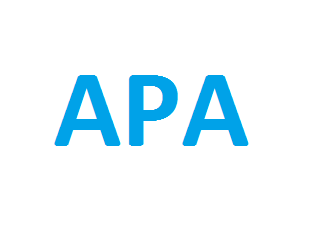
The Academic Perspective Procedia publishes Academic Platform symposiums papers as three volumes in a year. DOI number is given to all of our papers.
Publisher : Academic Perspective
Journal DOI : 10.33793/acperpro
Journal eISSN : 2667-5862
HAZOP and ALOHA Analysis of Acetone
Hikmet İSKENDER
1834
732
Abstract
A potential hazard can happen because of a technical and personal failures, natural disasters, terrorist attacks, and fires. The potential hazards can be dangerous for human health and environment, also cause economic losses. In an industrial plant, prevention and control of these consequences have an importancy. Hazard and Operability Analysis (HAZOP) is a technique for a system evaluation and determination of risk management of hazards. In particular, HAZOP is used in order to determine potential hazards in a system and operability problems. Moreover, Areal Location of Hazardous Atmosphere (ALOHA) is the potential hazard modelling programme, which is used to plan chemical emergencies. Acetone, a colorless liquid also known as propanone, is a solvent used in manufacture of plastics and other industrial products. The most hazardous property of acetone is its flammability. Acetone is a solvent widely used in the chemical industries and stored in large volumes, therefore, acetone is an important source of danger for chemical processes. In this study, acetone was investigated to be a hazardous chemical using HAZOP and ALOHA software in order to prevent and control a big hazardous event in an industrial plant.
Keywords:
HAZOP, ALOHA, SEVESO, acetone
References
[1] Rollinson A, Fire, explosion and chemical toxicity hazards of gasification energy from waste, J Loss Prev Process Ind, 2018; 54: 273-280.
[2] Seveso II (2012) Directive 2012/18/EU of the European Parliament and of the Council of 4 July 2012 on the Control of major-accident hazards involving dangerous substances, amending and subsequently repealing Council Directive 96/82/EC. Official Journal of the European Union. Article 3 – Article 13. Available at https://eur lex.europa.eu/legalcontent/EN/TXT/HTML/?uri=CELEX:32012L0018&from=EN.
[3] Djapan M, Macuzic I, Tadic D, Baldissone G, An innovative prognostic risk assessment tool for manufacturing sector based on the management of the human, organizational and technical/technological factors Saf Sci 2019; 119: 280-291.
[4] Ilic P, Ilic S, Bjelic L, Hazard modelling of accidental release chlorine gas using modern Tool-Aloha software, Quality Life, 2018; 1-2: 38-45.
[5] Jones R, Lehr W, Simecek-Beatty D, Reynolds RM. Aloha (Areal Locations of Hazardous Atmospheres) 5.4.4 Technical Documentation, NOAA Technical Memorandum NOS OR&R 43, 2013.
[6] Gupta AK, Nair SS, Trainer’s Module – Chemical (Industrial) Disaster Management – 1. NIDM, New Delhi, Edition First, 2012.
[7] Howard WL, In: Kirk-Othmer editor, Encyclopaedia of Chemical Technology. Acetone. 4th ed. New York: John Wiley, 1991.
[8] Lees FP, Loss Prevention in The Process Industries, Hazard Identification, Assessment and Control. Printed and Bound at Ajanta Offset. 2nd ed. Delhi: Fire, Butterworth-Heinemann, 1996.
[9] https://www.tdi.texas.gov/fire/documents/fmannfpa704.pdf 19.05.2016.
[10] Chang YM, Lin H, You ML, Wu SY, Fire and explosion hazard evaluation for the acetone aqueous solutions. J Therm Anal Calorim 2011; 106:179–189.
[11] Gun P, An investigation on hazard and operability study (HAZOP) according to Seveso III directive and special case studies, ITU, Institute of Science and Technology, Department of Chemical Engineering, MSc Thesis 2016.
Cite
© Academic Perspective 2018. All rights reserved.





